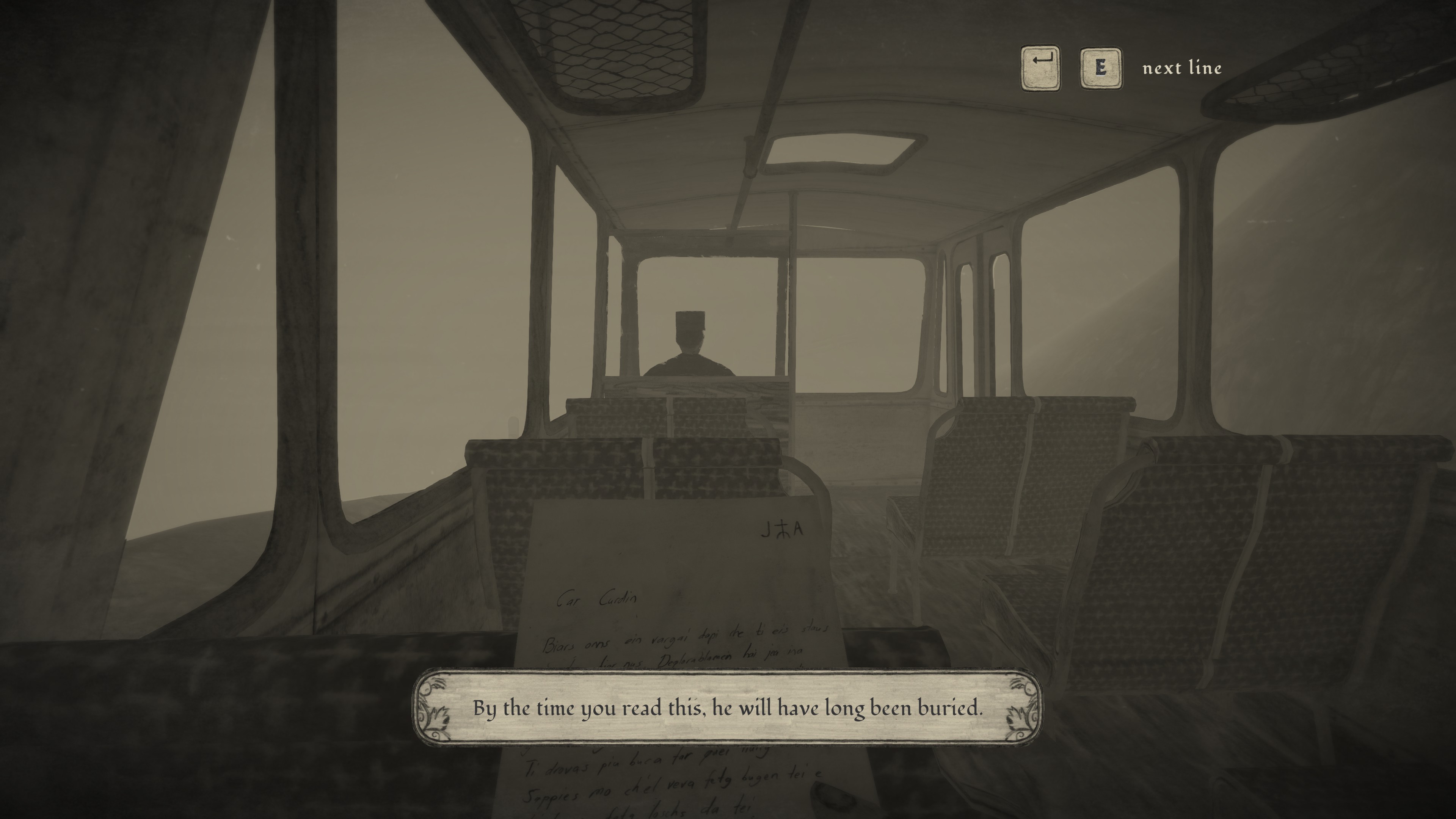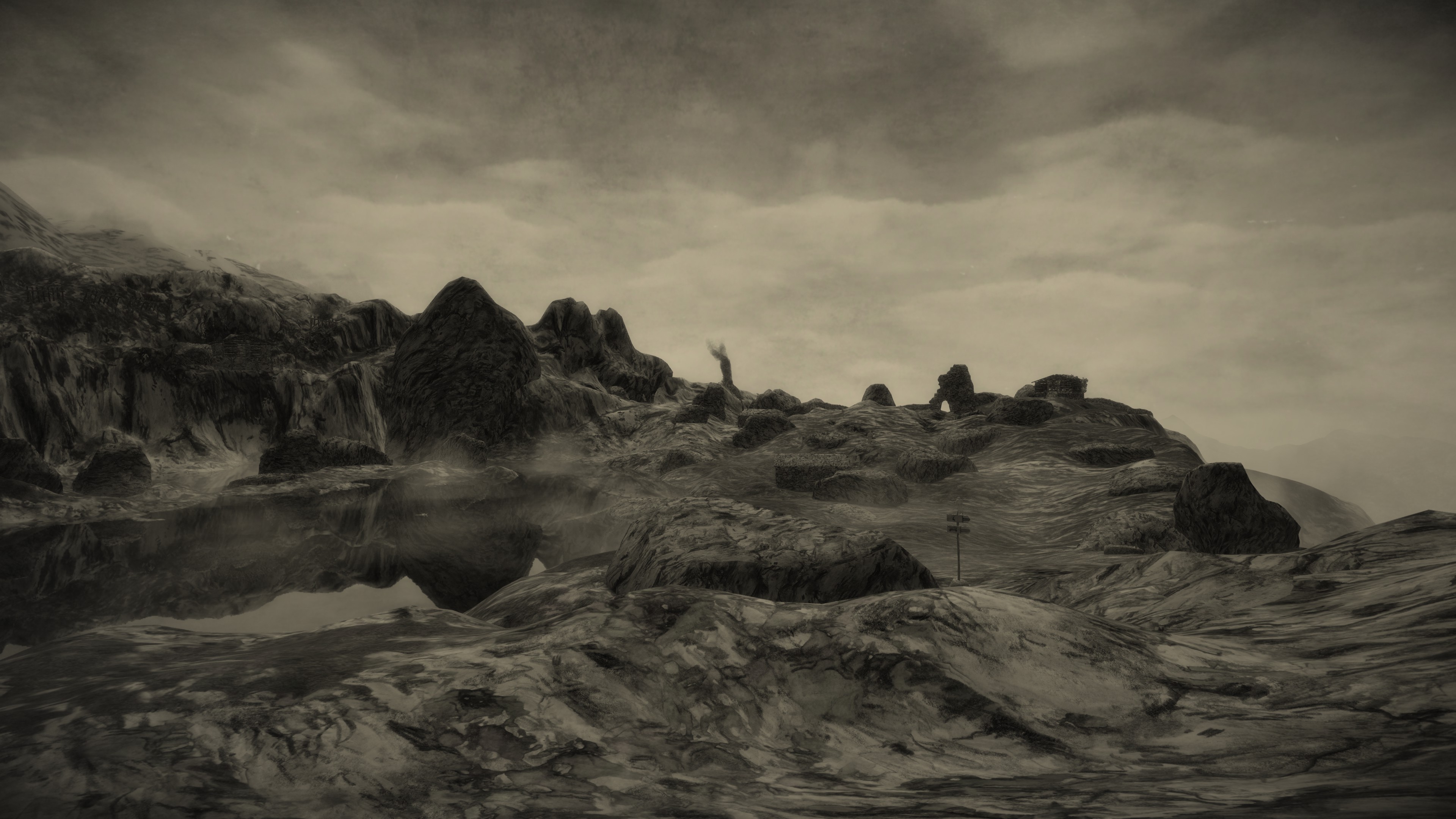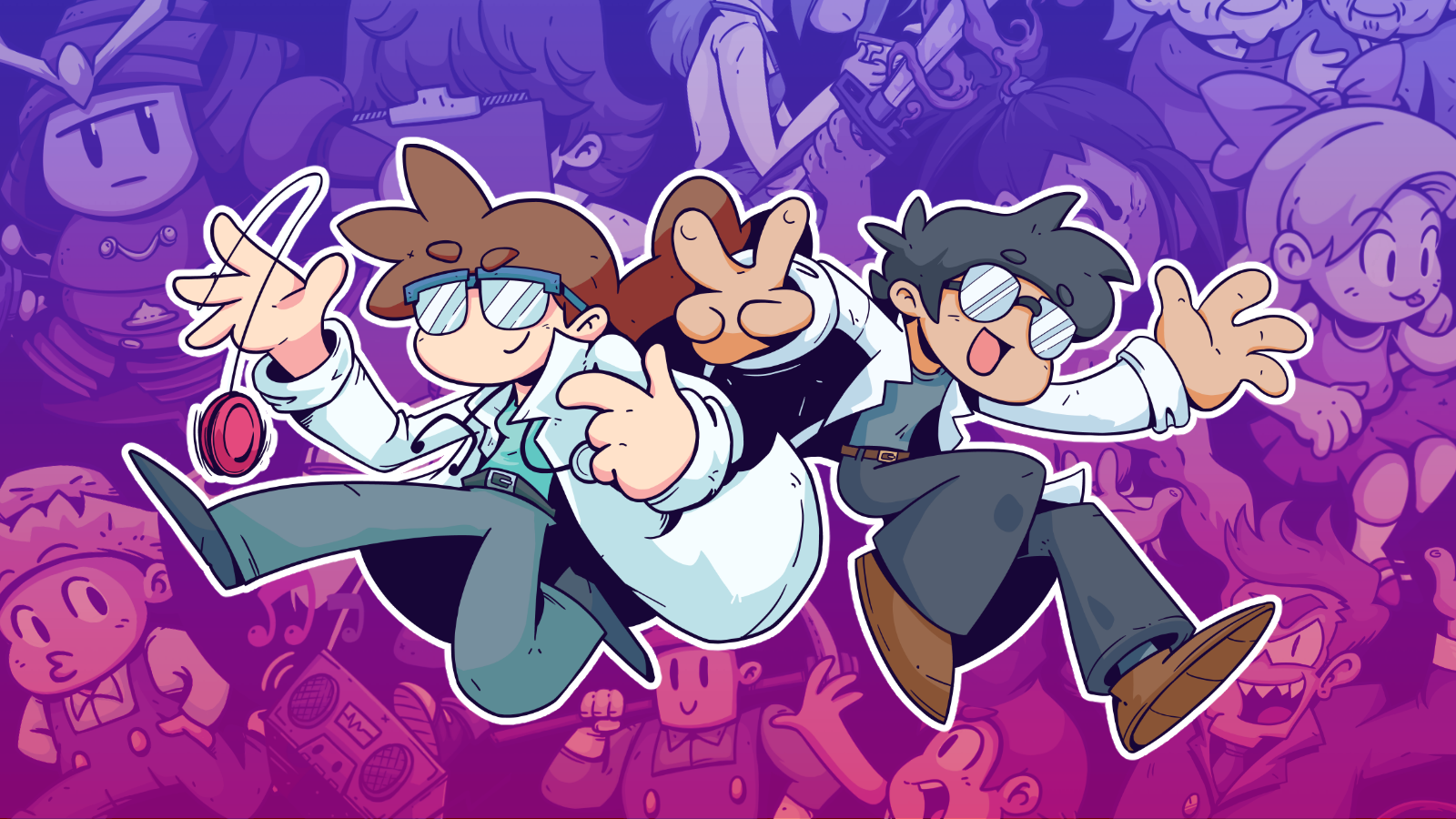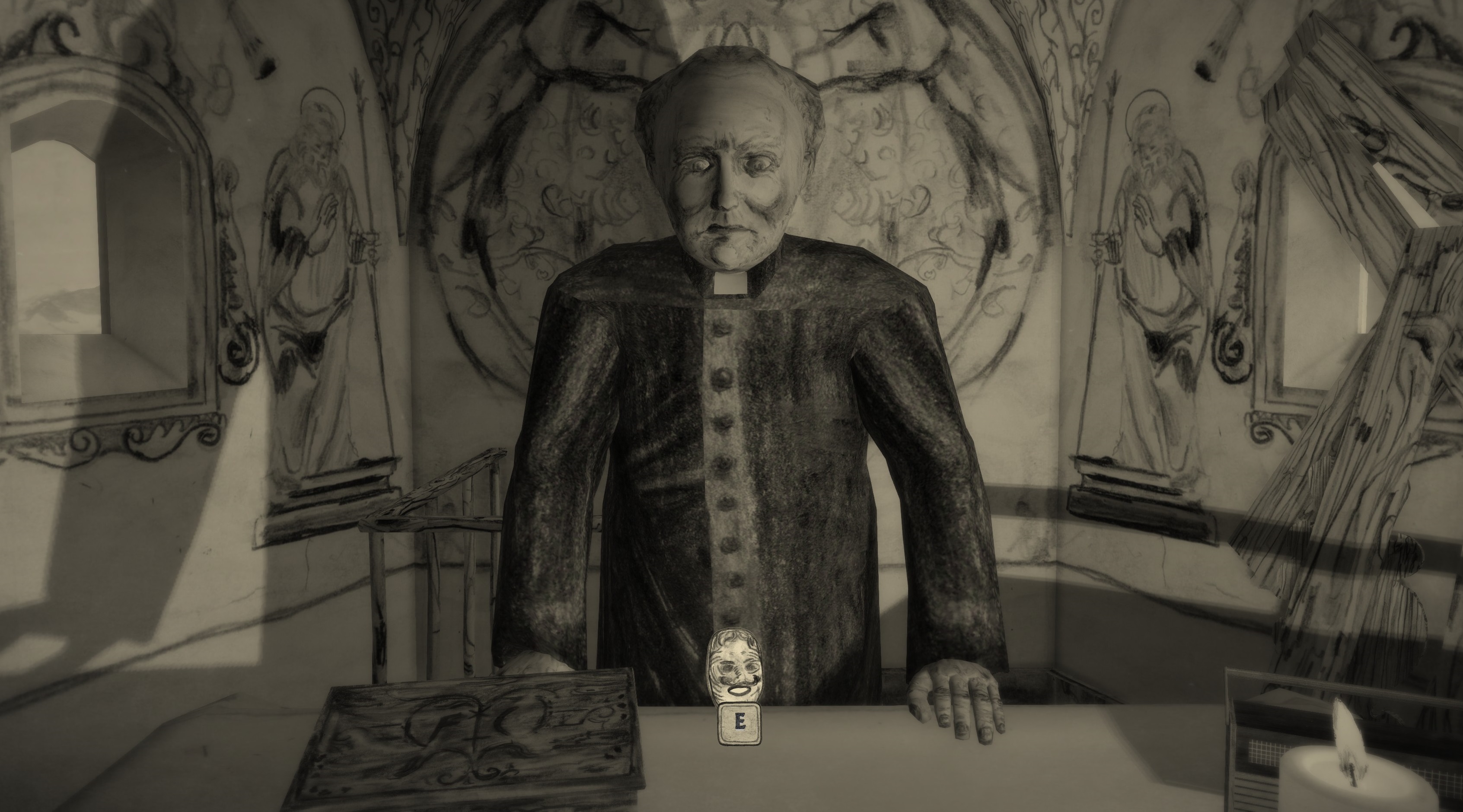
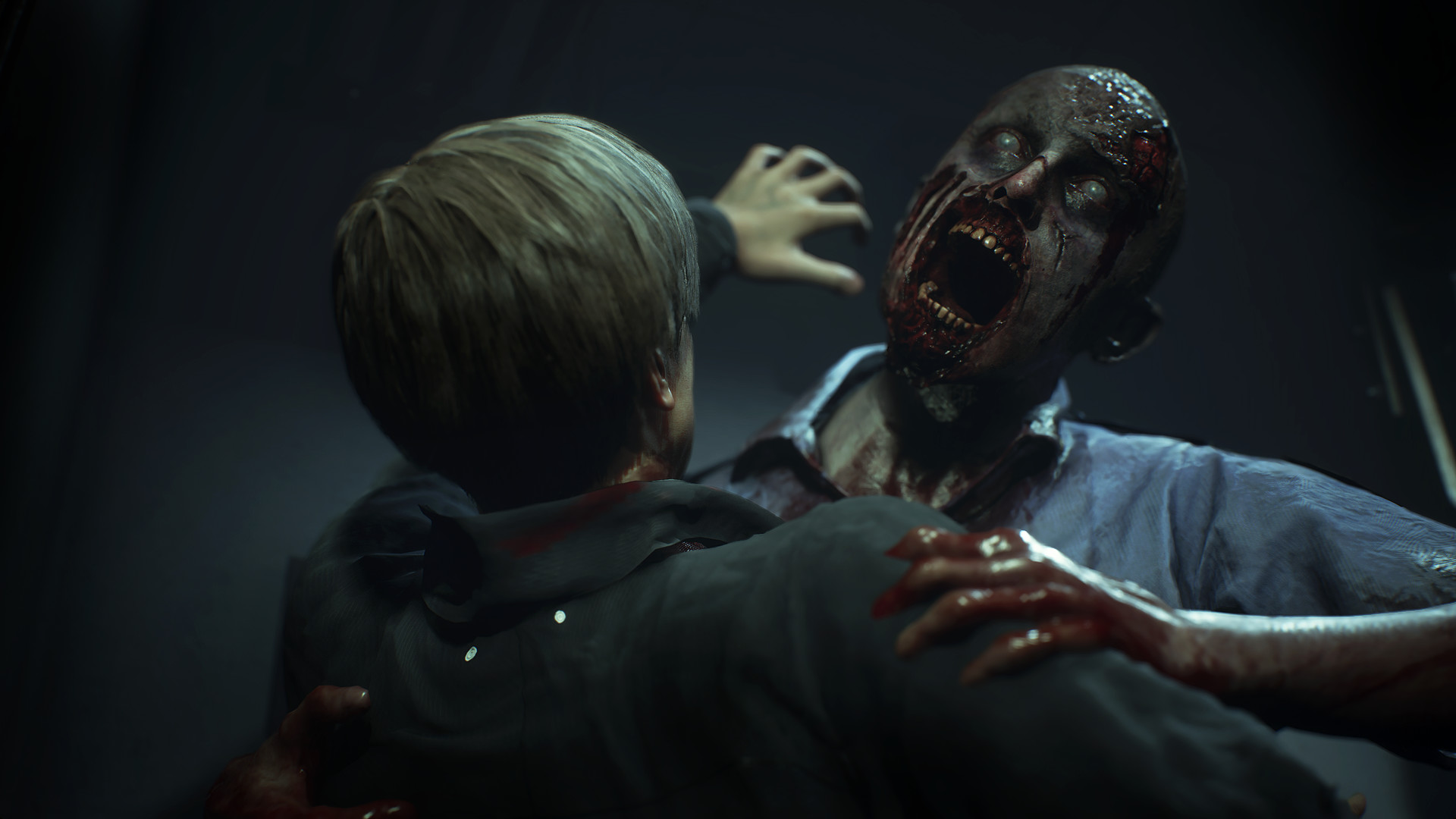
For more chills and scares, check out our frequently updated list of the best horror games on PC.
I'm walking alongside a glacial lake on an ashen mountain plateau when I come to the hut. I already passed a much bigger hut, but I didn't go in it because there were things over there. This one seems entirely thing-less, however, so I decide to investigate. The hut turns out to be a meat-curing shed. I can tell this by the sides of goat hanging from a rail of meat-hooks running the length of the shed. I'm not sure why there's a dead man hanging beside them, but uncertainty is par for the course in Mundaun.
I walk to the meat and poke it. It makes a noise. Then the dead man makes a noise, proving he is not, in fact, dead. The other sides of meat make different noises, and it quickly becomes apparent that this is gaming's fleshiest musical puzzle. With a little effort, I figure out the right order to hit the meat, and the not-dead man rewards me by vomiting up a key. I pluck the key from his mouth and walk into the hazy sunlight, leaving him happily dangling on his noose. None of this is ever spoken about again.
If your thinking is currently along the lines of "What the fuck", welcome to Mundaun, the best horror game in ages.
Developed almost entirely by Swiss game designer Michael Ziegler, Mundaun is an eerie folktale revolving around a young man named Curdin, who returns to his grandfather Flurian's hay farm after learning that he died in a barn fire. According to a letter sent by the local priest, Flurian has already been buried, and Curdin is encouraged not to visit the grave. Which, of course, has the exact opposite effect, and Curdin arrives to investigate what really happened to his grandad.
By now you've probably noticed Mundaun's most striking feature, the art-style. Mundaun's textures are entirely hand-drawn in pencil, resulting in a stunning greyscale effect that immediately lends Mundaun a distinctive and—to chance a pun—leaden atmosphere. The detail is remarkable, from the doodled knots in the wooden beams of your grandfather's farmhouse, to the highly expressive faces of the game's handful of characters.
Most of all, though, Mundaun's art effectively captures the looming power of the mountain that forms both the game's setting and the centrepiece of its horror. Whenever you glance up at the mountain's twin black peaks – visible at most points in the game – you get a sense that something is looking back. The way Mundaun's story slowly reels you toward those peaks only compounds that feeling of being watched by some omniscient, malevolent force.
This broader sense of unease lies at the crux of Mundaun's horror, because the game largely avoids more conventional horror game tactics. Jump scares are basically nonexistent, and although a few enemies will chase and attack you, these too are fairly uncommon. Indeed, there are long stretches of Mundaun where the experience is almost pleasant; a nice wee getaway in the alps. You spend the early game exploring your grandfather's farmhouse and the pastoral slopes that surround it. You'll chat with the locals, solve a few environmental puzzles, and go about mundane tasks like making coffee and collecting hay in your grandfather's Muvel, a fully driveable haywagon complete with functioning radio.
Keep up to date with the most important stories and the best deals, as picked by the PC Gamer team.
These everyday activities are more than just a way for Mundaun to bulk out its running time. They ground you in the game's world, giving you reasons to reach out and touch it, to immerse yourself in your grandfather's past. It makes the world feel real, which in turn makes it all the more effective when Mundaun suddenly confronts you with something unreal.
Even here, Mundaun doesn't approach its horror in a familiar way. There's rarely a clear divide between the game's low-key adventuring and its "scary" moments. Instead, it freely slides from one to the other. You'll drive through a tunnel that seems perfectly ordinary. But then the tunnel gets longer, and then smaller, before the road rolls right over a sheer precipice, plummeting you down into some eldritch domain. Elsewhere, you'll be wandering around some mountain pass, then turn a corner to be confronted by a floating figure wearing a basket over its face, who proceeds to shoot bees at you.
There are also points where Mundaun stands right on the fence, not actively trying to scare you, but being so uncompromisingly strange that you can't help but feel weirded out. One of my favourite sequences sees you descend into a subterranean bunker (which, in case you didn't know, Switzerland has loads of). You're guided through the bunker's twisting corridors by the spirits of dead soldiers, and you have no idea whether they're leading you to your destination or luring you into a trap.
Mundaun isn't entirely free of problems. Combat is its weakest element, it rarely forces you to confront enemies directly. You can often evade the handful of creatures that prowl the mountain's slopes, or deal with them in other ways like setting them on fire or running them down with the Muvel. Moreover, while the story is generally good, the script lacks subtlety in places. Curdin tends overstate things when Mundaun would be better served letting the visuals do the talking. Finally, the ending is the one place where Munduan succumbs to cheap horror tropes, dropping a last-minute surprise before essentially ending on a question mark.
Still, these are minor flaws which do little to detract from the fact that Mundaun is not quite like any other horror game I've played. Its closest cousin is probably Frictional's SOMA, which also strives to avoid conventional scares in lieu of a surreal, existential terror. Mundaun is similarly fascinating and similarly effective, a pencil-drawn fever-dream that'll linger in your mind long after you've completed it.
Rick has been fascinated by PC gaming since he was seven years old, when he used to sneak into his dad's home office for covert sessions of Doom. He grew up on a diet of similarly unsuitable games, with favourites including Quake, Thief, Half-Life and Deus Ex. Between 2013 and 2022, Rick was games editor of Custom PC magazine and associated website bit-tech.net. But he's always kept one foot in freelance games journalism, writing for publications like Edge, Eurogamer, the Guardian and, naturally, PC Gamer. While he'll play anything that can be controlled with a keyboard and mouse, he has a particular passion for first-person shooters and immersive sims.
